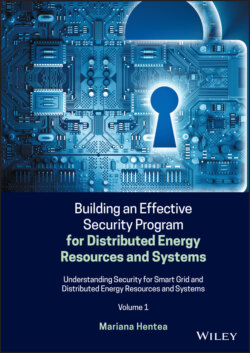Читать книгу Building an Effective Security Program for Distributed Energy Resources and Systems - Mariana Hentea - Страница 29
1.3.3 DER Systems
ОглавлениеDER systems include a combination of technologies and energy options and can be used in several ways [Renewable Energy], [DER Systems]. The effective use of grid‐connected DER may require DER with more reliable capabilities such as power electronic interfaces, communications, and control devices for efficient dispatch and operation [Taylor 2012].
DER systems include generation and storage systems, both renewable and nonrenewable. Renewable systems may include PV systems, wind turbines, biofuel systems, fuel cells, battery storage systems, electric and thermal storage systems, cogeneration systems, and small hydro plants [DER Systems]. Nonrenewable systems may include diesel generators, gas turbine generators, and others [NREL 2014]. Figure 1.13 illustrates the different DER systems that can provide energy to the Smart Grid, utility‐scale providers, or homes.
Figure 1.13 DER locations scenario.
Source: [ENISA 2015b].
Public Domain.
Each type of DER system has its own unique characteristics, but in general, each DER system can be treated as a small‐ to medium‐sized source of electric power. EVs can sometimes act as DER systems. Since EVs also have different purposes, they are identified as separate from the other types of DER systems in [EPRI 2013].
Security concerns related to DERs expand too including many areas, from the smallest entity (device) to the highest entity (Smart Grid). Another issue is the dispersed responsibility for security control. Utilities do not typically have direct organizational control over these DER systems and often need to operate through DER owners, commercial retail energy providers, aggregators, virtual power plant (VPP) managers, and other third parties [ENISA 2015b]. Thus, key drivers of DERs developments include microgrids and VPP [DOE 2015b].
